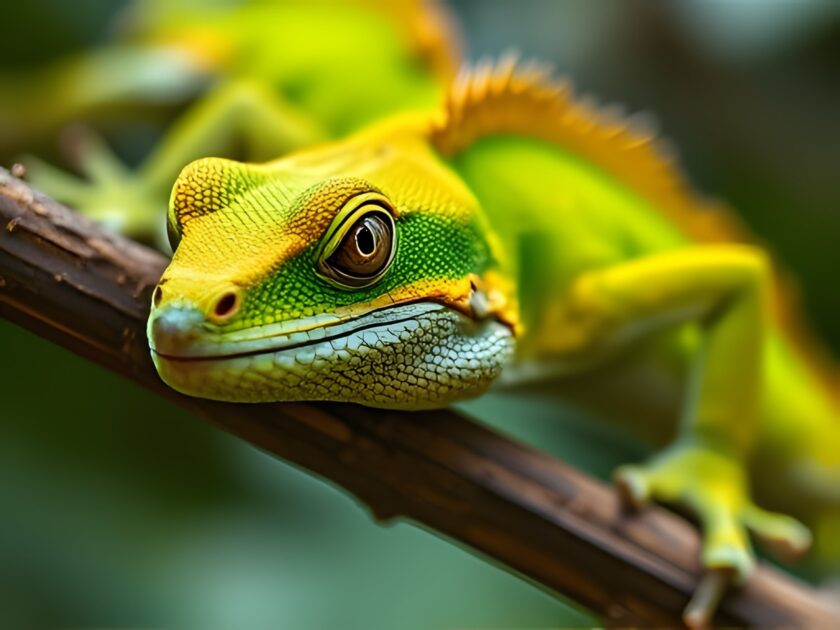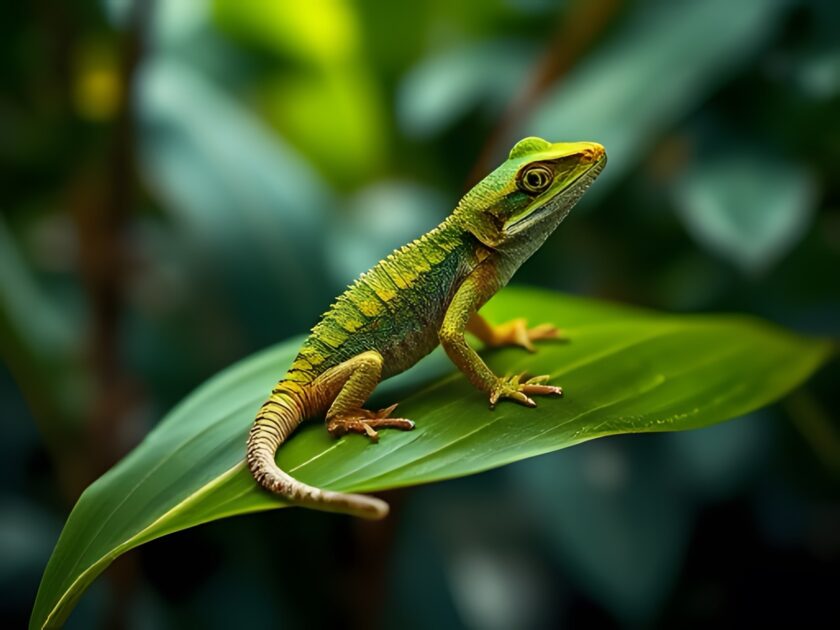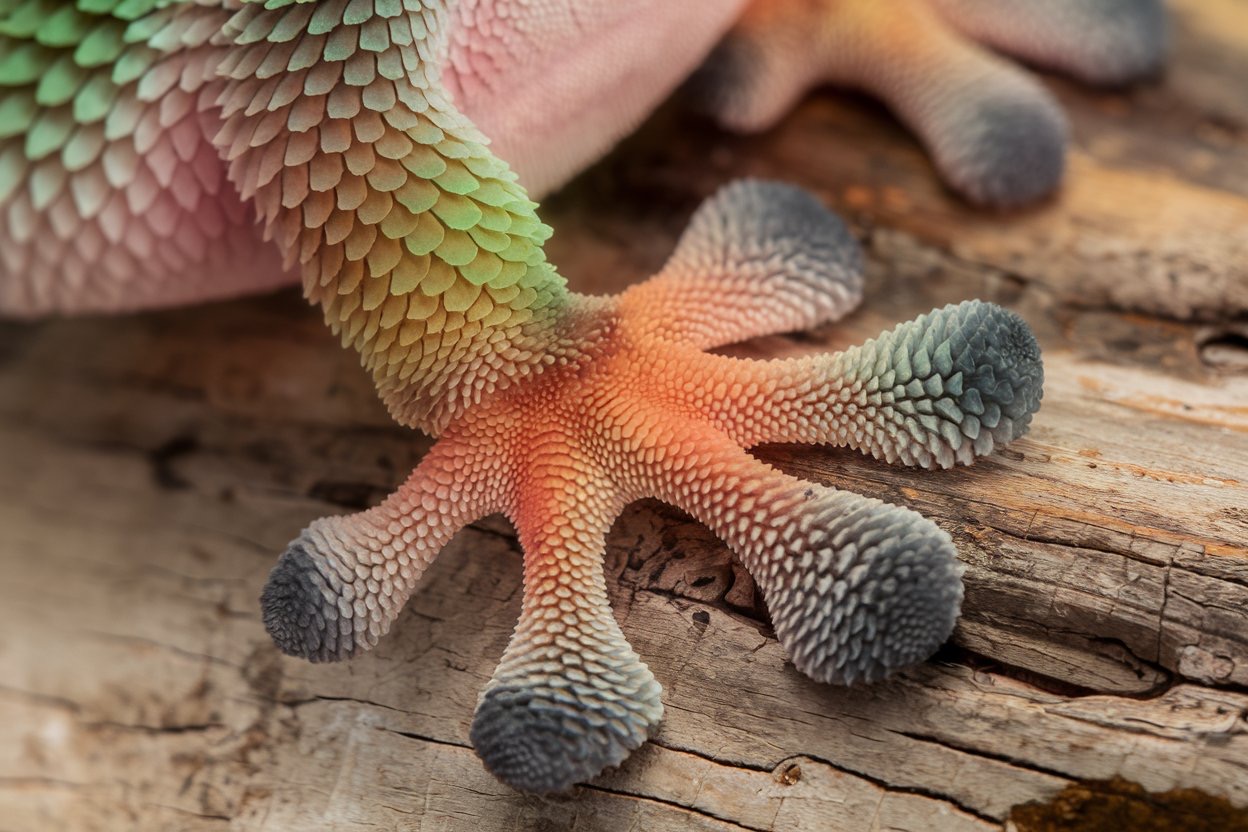You might have wondered how geckos defy gravity and cling effortlessly to ceilings and walls. This remarkable ability is due to millions of tiny hair-like structures on their toes, known as setae. These setae create a strong adhesive force through a combination of molecular interactions, allowing geckos to scale vertical surfaces with ease. In this post, you’ll discover the science behind their sticky feet and gain insights into the fascinating adaptations that enable them to navigate their environments so expertly.
The Anatomy of Gecko Feet
Before delving into the fascinating mechanics of gecko adhesion, it’s imperative to understand the unique structure of their feet. Geckos possess specialised adaptations that enable them to navigate vertical surfaces and ceilings with ease. This incredible climbing ability arises from the intricate design of their toe pads, which play a significant role in their remarkable stickiness. By exploring these features, you’ll gain insight into how these enchanting creatures master locomotion across a variety of terrains.
Structure of Toe Pads
Behind the gecko’s extraordinary adhesion lies the specialised structure of its toe pads. These pads are broad and flattened, allowing for maximum contact with surfaces. They are composed of a soft, flexible material that conforms to the contours of various substrates, enhancing grip. The unique design enables geckos to maintain stability, making them agile climbers capable of defying gravity.
Microscopic Hairs (Setae)
Above the toe pads, you’ll find an impressive feature vital to a gecko’s gripping prowess—the microscopic hairs known as setae. These hair-like structures are a key component that elevates their climbing ability to new heights. In fact, each pad contains hundreds of thousands of these tiny setae, which enhance the surface area for interaction with vertical or overhanging surfaces.
Indeed, the effectiveness of setae stems from their unique structure. Each seta branches out into hundreds of even finer structures called spatulae. These spatulae create a phenomenon known as van der Waals forces, allowing geckos to adhere to surfaces without any adhesive secretions. This incredible mechanism means geckos can cling to ceilings effortlessly, showcasing an evolutionary marvel that continues to inspire scientific research and biomimetic innovations.

The Science of Adhesion
You might be surprised to learn that the ability of geckos to stick to surfaces largely stems from their unique biological structure. Their feet are covered in millions of tiny hair-like structures known as setae, which increase surface area and allow for a remarkable kind of adhesion. This natural phenomenon enables them to traverse vertical surfaces and even ceilings with ease.
Van der Waals Forces
For geckos, the secret lies in the van der Waals forces—a weak electrical attraction between molecules. These forces can collectively create a significant adhesive strength, allowing a gecko to grip surfaces with just a fraction of its body weight. The setae on their toes facilitate countless interactions, enhancing their staying power on a variety of surfaces.
Dry Adhesion vs. Wet Adhesion
After understanding van der Waals forces, it is important to differentiate between dry adhesion and wet adhesion. Dry adhesion occurs in the absence of moisture, relying solely on molecular interactions like van der Waals forces. In contrast, wet adhesion involves the presence of liquids, which can interfere with these interactions and affect the overall adhesion capability.
Another important distinction is how geckos adapt their grip depending on environmental conditions. In dry conditions, their setae work efficiently to maximise contact with surfaces, utilising van der Waals forces for optimal adhesion. Conversely, wet conditions might lead to decreased effectiveness due to a layer of moisture that can disrupt the intimate contact required for these forces to take hold. Geckos are extraordinarily adept at adjusting their climbing techniques to maintain their agility, regardless of the surface conditions they encounter.
Evolutionary Advantages
Any animal that adapts to its environment gains a distinct evolutionary edge. For geckos, this remarkable sticking ability enhances their survival, allowing them to navigate vertical surfaces and ceilings with ease. This adaptation not only aids in accessing food sources but also provides a refuge from threats, ultimately contributing to their evolutionary success over millions of years.
Predator Evasion
Above the ground, geckos can escape from various predators by taking to the walls and ceilings of their habitat. This vertical movement allows them to find refuge in places that many other animals cannot reach, reducing their risk of becoming prey. Their ability to seamlessly transition between surfaces enables them to remain elusive, enhancing their chances of survival.
Habitat Exploration
The ability to cling to ceilings and walls opens up a world of possibilities for geckos. This skill allows you to discover new environments and resources that would otherwise be inaccessible. Being able to traverse different surfaces means you can investigate various food sources, such as insects residing in crevices, and exploit habitats that other animals may overlook.
Hence, your adaptability as a gecko maximises your chances of survival in diverse ecosystems. By exploring various surfaces, you can efficiently locate food, enhance your mating opportunities, and avoid competition with ground-dwelling creatures. Such versatile movement contributes significantly to the overall success of geckos in varying environments, enabling them to thrive where others cannot.

Applications in Technology
Not only do geckos inspire curiosity, but their unique adhesion mechanisms have prompted innovative advancements in technology. Researchers are now harnessing the principles behind their sticky feet to create new materials and devices that can revolutionise how we interact with surfaces. From adhesives to robotics, the potential applications are vast and intriguing.
Adhesive Innovations
About gecko-inspired adhesives, these remarkable substances leverage the microstructures found on a gecko’s toes. By mimicking the microscopic hair-like structures called setae, scientists have developed tapes and glues that offer strong adhesion without leaving residue. These innovations have implications for everything from construction to medical applications, offering a cleaner, reusable alternative to conventional adhesives.
Robotics and Climbing Devices
Innovations inspired by geckos extend into the field of robotics, particularly in the development of climbing devices. Engineers are creating robots that can ascend vertical surfaces, using designs inspired by a gecko’s ability to traverse walls and ceilings with ease. This technology is particularly valuable in rescue missions and inspections of hard-to-reach areas.
Plus, the integration of gecko-like technology in climbing robots enables them to navigate challenging environments efficiently. These robots are equipped with synthetic setae that enhance grip, allowing them to scale smooth surfaces where traditional robotics would struggle. With potential applications in search and rescue, maintenance of infrastructure, and even planetary exploration, these advancements are reshaping our understanding of mobility in robotic systems. You might find that such technology could change the way we approach tasks that require climbing or traversing vertical spaces.
Common Misconceptions
Despite the fascination surrounding geckos’ ability to adhere to surfaces, several misconceptions persist. Many people assume that geckos rely on a sticky substance on their feet to climb; however, their remarkable ability is due to millions of tiny hair-like structures called setae, which exploit molecular forces to create adhesion. This often leads to misunderstandings about the mechanisms behind their impressive climbing skills, as well as how these creatures interact with their environments.
Gecko Sticky Feet Myths
Myths about gecko adhesion often inflate their capabilities beyond reality. One common belief is that geckos can stick to any surface, including wet or greasy ones. In truth, their feet are most effective on clean, dry surfaces where their setae can maximise contact and van der Waals forces can efficiently act. This restricts their climbing prowess to a specific range of conditions rather than an all-encompassing ability to conquer any surface.
Limitations of Gecko Adhesion
Feet of geckos, while incredibly effective, do have their limitations. These skilled climbers struggle on certain surfaces like those that are too rough or have extreme angles. Additionally, their adhesion diminishes significantly when faced with moisture or a greasy coating, making certain environments challenging to navigate. This means that, while geckos may seem to defy gravity, their remarkable adherence is not universally applicable.
Gecko adhesion is impressively selective, allowing them to thrive in particular habitats while facing challenges in others. For instance, their climbing ability can falter on very smooth surfaces where their setae can’t grip effectively, or where substantial debris interferes with contact. The reduced effectiveness of their sticky feet when wet or oily underscores that their remarkable skills, whilst extraordinary, are not universally applicable across all environments. Understanding these limitations helps showcase the elegant balance of adaptation and constraint in nature.
Future Research Directions
For those interested in the fascinating world of gecko adhesion, future research promises to unravel even greater insights. Scientists are exploring the molecular structure of gecko feet to develop synthetic materials that mimic their extraordinary sticking ability. By combining biology with engineering, you can anticipate advancements that potentially revolutionise various industries, from robotics to construction.
Bio-inspiration in Materials Science
Below the surface of gecko adhesion lies a wealth of bio-inspiration in materials science. Researchers are drawing from the unique properties of keratin proteins found in gecko toes, leading to the development of advanced adhesives that boast exceptional strength and versatility. This bio-inspired approach allows you to envision materials that adhere in wet or dirty conditions, expanding applications in everyday products.
Enhancements in Adhesive Technology
Beside the exploration of new materials, enhancements in adhesive technology are a promising area of research. The insights gained from gecko adhesion mechanisms are paving the way for new adhesive formulations, which could lead to more effective solutions across numerous sectors, including surgery and industrial manufacturing. These advancements are designed to improve the durability and effectiveness of adhesives you rely on daily.
Bioinspiration from geckos not only informs the development of new adhesives but also improves existing technologies. By studying the microscopic structures that enable geckos to grip surfaces effortlessly, scientists are crafting adhesives that can be strong yet easily removable. This innovation could significantly benefit industries like healthcare, where you may require precise attachment without damaging surfaces or materials during removal. As research progresses, you can look forward to even more reliable and innovative adhesive applications in your everyday life.
Summing up
The ability of geckos to adhere effortlessly to ceilings is a fascinating interplay of biology and physics that you can appreciate. Their specialised toe pads are covered in tiny, hair-like structures called setae, which exploit molecular forces known as van der Waals forces. This allows you to understand how geckos can effortlessly navigate their surroundings, showcasing nature’s ingenuity. By examining these mechanisms, you gain insights into potential applications in technology and materials science, revealing just how much we can learn from these remarkable creatures.

